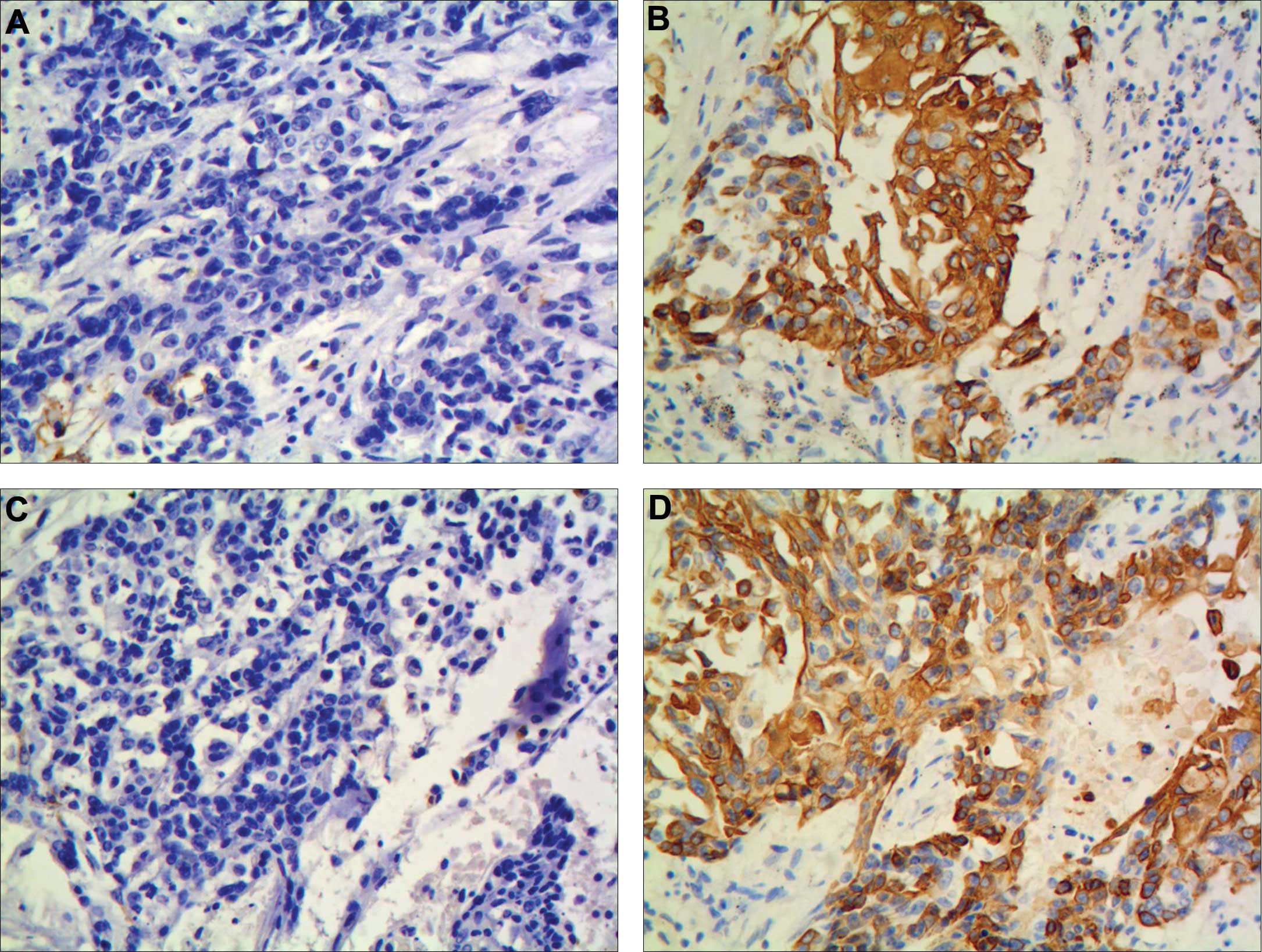Expression and clinical significance of the phosphatidylinositol 3‑kinase/protein kinase B signal transduction pathway in non‑small cell lung carcinoma
- Authors:
- Published online on: May 22, 2014 https://doi.org/10.3892/ol.2014.2167
- Pages: 601-607
Metrics:
Total
Views: 0 (Spandidos Publications: | PMC Statistics:
)
Total PDF Downloads: 0 (Spandidos Publications: | PMC Statistics:
)
Abstract
The overactivation of the phosphatidylinositol 3‑kinase (PI3K)/protein kinase B (Akt) signal transduction pathway has been examined in various carcinomas and is reported to be significantly correlated with prognosis. However, little is known with regard to the PI3K/Akt signal transduction pathway in advanced non‑small cell lung carcinoma (NSCLC). The present study investigated the expression of PI3K and phosphorylated (p)‑Akt protein and its clinical significance in NSCLC. The clinical records of 157 patients with NSCLC (70 stage I‑IIIA and 87 stage IIIB‑IV cases), consisting of 75 cases of squamous cell carcinoma and 82 cases of adenocarcinoma, together with 30 resected lung cancer tumor‑adjacent tissue samples, were retrospectively evaluated. PI3K and p‑Akt expression in the NSCLC and tumor‑adjacent tissues were measured using an immunohistochemical method, and its correlation with the clinicopathological data and prognosis in advanced NSCLC was evaluated. PI3K and p‑Akt expression was significantly higher in the cancer tissues (χ2=14.8455; P=0.001) than in the tumor‑adjacent tissues (χ2=14.2615; P=0.001). The overexpression of p‑Akt in stage I‑IIIA NSCLC was associated with lymph node metastasis (χ2=6.1189; P=0.013) and tumor‑node‑metastasis (TNM) stage (χ2=8.9752; P=0.011), however, no correlation was observed with gender, age, pathological type and histological grade. The overexpression of p‑Akt in stage IIIB‑IV NSCLC was only associated with TNM stage (χ2=5.7501; P=0.016), and no correlation was observed with gender, age, pathological type, histological grade and Eastern Cooperative Oncology Group (ECOG) performance status (PS). The overexpression of PI3K was not found to correlate with the aforementioned clinicopathological variables in all patients. Survival was significantly improved in advanced NSCLC with PI3K‑ and p‑Akt‑negative expression compared with PI3K‑ and p‑Akt‑positive expression [P13K: 17.70 months (95% confidence interval (CI), 15.11‑20.28 months) vs. 13.43 months (95% CI, 11.83‑15.02 months); P=0.004; and p-Akt: 17.13 months (95% CI, 14.93‑19.34 months) vs. 13.07 months (95% CI, 11.32‑14.82 months); P=0.007]. Multivariate analysis showed that PI3K [hazard ratio (HR)=2.143; 95% CI, 1.211‑3.790; P=0.009], p‑Akt (HR=1.991; 95% CI, 1.009‑3.927; P=0.047), TNM stage (HR=4.788; 95% CI, 2.591‑8.848; P=0.001) and ECOG‑PS (HR=3.272; 95% CI, 1.701‑6.296; P=0.001) were independent predictors for survival in stage IIIB‑IV NSCLC. These results indicated that p‑Akt overexpression closely correlates with factors of an unfavorable prognosis in NSCLC. PI3K and p‑Akt overexpression are independent markers of a poor prognosis in advanced NSCLC.















